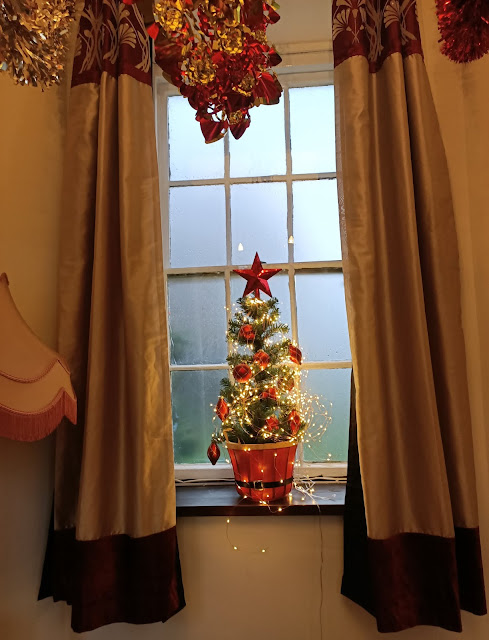The Quietist Month
Welcome to the second post from Betley Court Gardens, and the Dead Gardeners’ Society for 2024. These monthly posts are a chance to catch up with what’s been happening in the gardens, and any events we have coming up.
House Tours
It is coming up to the fifth anniversary of our disastrous fire at Betley Court, and the rebuild is well underway. Would you like to see how the rebuild is going on the inside of the house? We have a weekend of tours of Betley Court coming up this month on the 24th and 25th February.
%20(48).jpg) |
| First floor room, Betley Court. (Photo: Washington & Peart, Centre Space Arts) |
We often receive lovely comments about how good Betley Court looks from the outside now that the rebuild is well under way and the scaffolding is down. Our tours are a chance to find out what we’re up to inside. Nigel and I will be on hand during the tours, so if you have any questions about the rebuild, it’s the perfect opportunity to ask.
We’ll take the tour through some of the rooms of the main house, yet to be restored. Then we’ll climb to the top of the house up one of the newly installed staircases, to view the marvellous new roof from the inside. This will include the carefully restored and unusual horizontal chimney that Historic England got very excited about, and the vast steel frame that holds up our beautiful roof.
As always with the house tours, we advise stout footwear and sensible clothing, as building work is still ongoing. Complimentary hot drinks and snacks will be available in the visitors’ hub afterwards, along will free map guides should guests wish to tour the gardens. Tickets are £10 + booking fee.
TICKETS: Events (betleycourtgardens.co.uk)
In the Gardens
Reflecting on the early year, the American writer Rosalie Muller Wright mused,
“January is the quietest month in the garden. But just because it looks quiet doesn’t mean that nothing is happening. The soil, open to the sky, absorbs the pure rainfall while microorganisms convert tilled-under fodder into usable nutrients for the next crop of plants. The feasting earthworms tunnel along, aerating the soil and preparing it to welcome the seeds and bare roots to come.” ― Rosalie Muller Wright
It's almost as if the gardens are gathering themselves for the growing season ahead. On the southern elevation of the gardens, Shane and Melvyn our handymen have reinstated the flower borders around the perimeter of the house. The new borders have crisp, smart edging, delineating border from lawn. It’s all starting to look ship-shape again.
 |
| Crisp new edging, delineating border from lawn (photo: Su Hurrell) |
This area suffered extensive damage duringto the fire. Plants that survived the chaos of the emergency response were then subjected to trampling during the demolition stage, and further damage as the house was rebuilt. We are still extracting bits of slate and glass that embedded themselves in the lawns and borders!
Phoebe our gardener has been amazing, planting thousands of bulbs in the borders and beds during the dormant period. Some of the bulbs are poking their heads through already, and I’m excited to see their blooms. Hopefully, their flowering seasons will coincide with our event weekends.
 |
| Snowdrops (Galanthus sp), always the first to appear in the formal beds |
A few old favourites survived the ravages of the rebuild. A favourite plant of my late mother-in-law Freda, an ancient yellow Forsythia is showing signs of growth. It is amazing how strong the will to live is! Elsewhere, a patch of asparagus survived living under scaffolding for three years, and pops up each spring. I’ve always wondered why the asparagus grows there, just outside the drawing room window. Was it planted for its ferny fronds to add delicate and airy foliage to flower arrangements, or was it a self-sown ‘volunteer’. Whatever the reason, it is lovely to see these plants flourishing in a garden so recently a wrecked site strewn with debris.
 |
| It looks unpromising, but this is Freda's favourite Forsythia. (Photo: Su Hurrell) |
 |
| Barron's yew screen, due the next of its annual cutbacks (photo: Su Hurrell) |
We also need to get our skates on and undertake the second cut on Barron’s yew screen. This is a winter job, done when the old yews are dormant during the winter. Regular readers will know that we have to take our time as we regenerate the yew screen. Early signs are promising that we will be able to restore this Victorian topiary curiosity!
All best wishes
Ladybird Su



Comments
Post a Comment